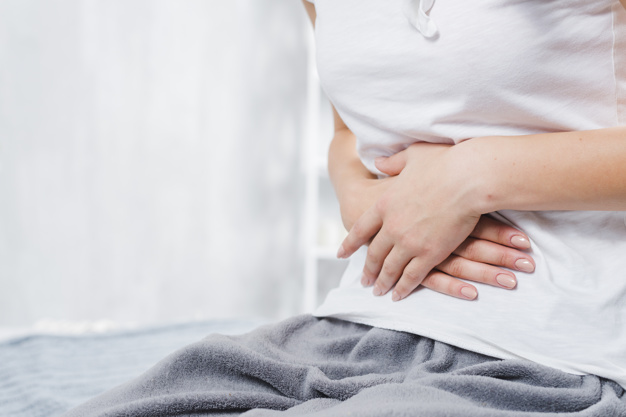Urinary Incontinence:
It is an involuntary leakage or loss of urine.
Risks factors:
– Age.
– Obesity.
– Number of pregnancies and deliveries.
– Delivery type.
– Heredity.
– Smoking,
– Caffeine intake.
– Diabetes.
– Strokes.
Evaluation:
visit a specialist to:
– Talk about symptoms, history, and pattern of urinating and leakage to determine the type of incontinence.
– The doctor may ask you to write a diary to register your bladder behavior for several days.
– Examination of medical conditions related like pelvic prolapse.
– Some tests like:
Bladder Stress test: the doctor will ask you to cough strongly to observe any leakage.
B. Lab tests for blood and urine to test any infections.
C. Ultrasound to check bladder, uterus, kidneys and urethra.
D. Cystoscopy: a thin tube with camera will be inserted in urethra to observe the lining of bladder and the urethra.
E. Post void residual measurement:
You will be asked to urinate in a container to measure the urine. then the doctor will check the amount of urine left in your bladder by catheter or ultrasound.
Incontinence impact on life:
– Barrier to social life, activities and entertainment.
– Associated with depression.
– High financial expenses for treatment.
– Other health issue like skin rashes and urinary tract infections.
Types of incontinence:
1. Overflow incontinence.
2. Functional incontinence.
3.Stress Incontinence:
It is the involuntary leakage of urine resulting from abdominal pressure caused by sneezing, coughing or jumping. The reason is insufficient support from the pelvic floor muscles to bladder and urethra or intrinsic sphincter deficiency.
Causes:
1- When the muscles holding the bladder and the muscles responsible of releasing and holding urine get weak by:
– Vaginal childbirth.
– Chronic coughing.
– Chronic constipation.
– Obesity.
– High impact activities
– Previous pelvic surgery.
2- Intrinsic sphincter deficiency.
Treatment:
– Behavioral:
1. Kegel exercise.
2. Doctor may recommend the amount and the timing of fluids consumption during the day. Also, avoiding caffeinated drinks.
3. Treating chronic coughing.
4. Treating constipation.
5. Losing the extra weight
6. Doctor my ask you to go to toilet to urinate in timed intervals to train the bladder.
– Devices:
1. pessary: A ring placed in the vagina to support the urethra.
2. Urethral inserts: small disposable device inserted in the urethra as a blockage.
– Surgery:
1. Agent injections like collagen: it is injected in the area around the bladder and urethra to make it thicker and reduce leakage.
2. Sling procedure: Using patient’s own tissues to create a sling to support the urethra.
3. By mesh to support and lift tissues around the bladder and urethra.
– Other:
1. Electrical stimulation: By using electrical currents to stimulate weak muscles to contract.
How to avoid:
– Do not gain extra weight.
– Good diet with fibers and whole grain food to avoid constipation that causes straining on pelvic muscles.
– Do not smoke as smoking can cause chronic coughing.
4. Urge incontinence / overactive bladder:
It is a sudden urge to urinate, and most of the time urination happens before reaching the toilet on time. It is usually caused by abnormal bladder contractions. Sometimes it is triggered by events like hearing water dripping, exposing to sudden cold or drinking small amount of water. It is more common in older women.
Symptoms:
– Urinary urgency: sudden and immediate need to urinate.
– Waking up at night to urinate.
Causes:
– Bladder infection.
– Stones or tumors.
– Bladder obstruction.
– Nerves damage by some diseases like diabetes, strokes.
– Inflammation.
Treatment:
– Behavioral:
1. Change your diet and avoid food that irritates your bladder and make you urinate more frequently.
2. Bladder training by delaying urinating by some time when you feel the sudden urge to urinate.
3. Urinating in some fixed timing or intervals instead of waiting for the urge to urinate.
4. Pelvic muscles exercise like Kegel Exercise.
– Medication:
1. Medication to control ladder spasms.
2. Helps the bladder to relax.
– Surgery:
1. Increasing bladder storage capacity.
2. Diverting urine flow.
3. Botox Bladder Injections: paralyzing bladder muscles to decrease unwanted contractions.
Other:
1. Electrical stimulation: By using electrical current to stimulate weak muscles to contract.
2. Limiting nerves impulses to the responsible muscles.
How to avoid:
– Maintaining healthy weight.
– Quit smoking.
– Daily exercises.
– Dealing with chronic diseases like diabetes.
5. Mixed Incontinence:
Of both urge and stress incontinence and it is the most common type in women



